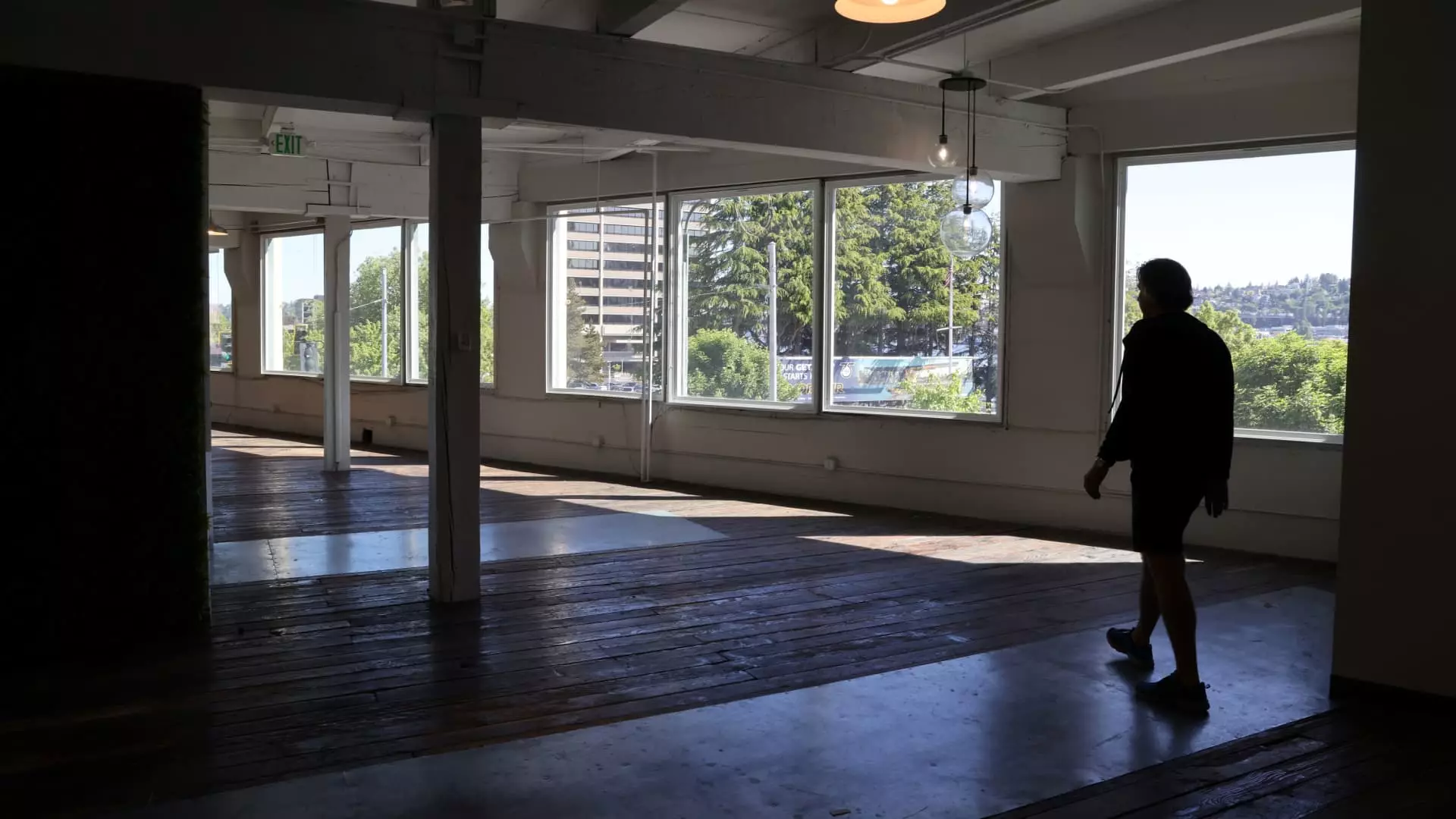The American office market is at a critical crossroad, emerging from the shadows of years marked by instability and discontent. The profound changes brought on by the pandemic have sparked a seismic shift in how we perceive work and office space utilization. For the first time in two and a half decades, demolitions and conversions of office spaces are outpacing new constructions, signaling a remarkable pivot in commercial real estate. This isn’t merely a statistic; it’s a poignant reminder that the days of sprawling, underutilized office buildings are numbered.
According to recent data from CBRE, the decline in traditional office usage is not just a trend, but a defining characteristic of our contemporary work culture, which emphasized flexibility over rigidity. With 23.3 million square feet set for demolitions or transformations compared to a mere 12.7 million square feet due for new construction, we find ourselves in a transformative epoch where less has become more. The dwindling numbers reflect not just an oversupply of office space, but a societal recalibration towards remote work as a viable alternative. This evolution raises existential questions about the future of the urban landscape, as offices morph from traditional cubicles into multipurpose community hubs or residential complexes.
The Ripple Effect on Vacancy Rates and Rental Markets
As we traverse this period of transition, vacancy rates hover at a staggering 19%, striking at the heart of commercial real estate. However, recent trends indicate an upward trajectory in office leasing activity, which surged by 18% in the first quarter of this year alone. The net absorption rate—a critical metric that measures newly occupied space against vacated spaces—has turned positive, suggesting that companies are slowly reassessing their physical workspace needs. This indicates that businesses are grappling with the dual realities of a persistent remote culture and an urging need for collaborative in-person engagements.
It raises an essential question: Amidst all these changes, who truly benefits? Major players in the office real estate investment trusts (REITs) are witnessing a resurgence, as prime Class A spaces regain their footing in the marketplace. Property owners of desirable locations are likely to find themselves in advantageous positions as demand stabilizes alongside the decreased supply of usable office spaces. This paradoxically comforting narrative shines a light on the economic resilience of major cities, but it doesn’t speak to the multitude of employees who struggle with the implications of returning to traditional office settings.
Challenges in Transformation and Conversion
Despite the positivity, the road ahead is fraught with challenges. Developers eyeing office conversions to multifamily residences are yelling optimism, with 43,500 residential units in the pipeline. Yet, the issue of dwindling ideal buildings for such transformations cannot be understated. As the best candidate structures vanish, securing viable options for conversion becomes increasingly strenuous. Furthermore, the veterans of the industry face the hurdles of soaring costs and supply chain bottlenecks, further complicating the narrative of ease in transformation.
These complications shine a stark light on the hypocrisy of the narrative surrounding office conversions. It is easy to champion the reinvention of spaces as vibrancy-boosting solutions for urban neighborhoods. Yet, these lofty ideals often harbor a reality that’s defeating, where financial constraints and market saturation can thwart practical execution.
Rethinking the Future
In a time when the normalcy of nine-to-five work is being questioned, the very fabric of how we conceptualize workspaces must evolve significantly. As more employees opt for hybrid models—seeking the comfort and focus of working remotely juxtaposed with the creative energy of office spaces—real estate stakeholders need to adapt their visions accordingly. The survival of the fittest isn’t just a mantra; it’s a necessity in redefining urban environments to meet the demands of a new generation.
As we witness a continual ebb and flow of office usage mirrored in the psyche of the workforce, a call to action emerges for planners, policymakers, and developers alike. It’s not merely about tearing down old structures; it’s about laying the groundwork for functional, unified environments that uphold the essence of community, productivity, and, most importantly, adaptability. In navigating the complexities of this transformative moment, we are reminded that innovation may not only stem from new constructions but through creative reimagining of what once was, ensuring a dynamic trajectory for generations to come.


Leave a Reply